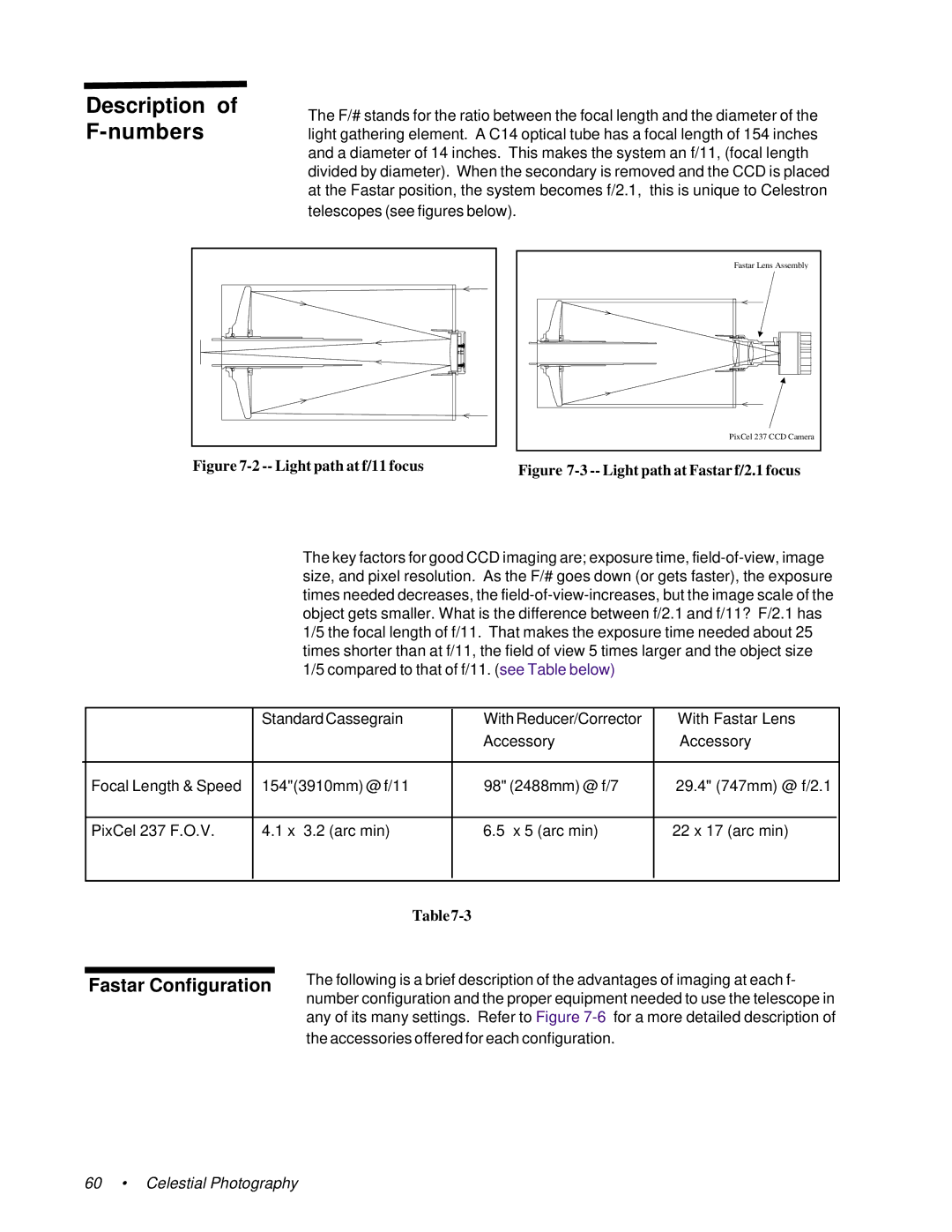
Description of F-numbers
The F/# stands for the ratio between the focal length and the diameter of the light gathering element. A C14 optical tube has a focal length of 154 inches and a diameter of 14 inches. This makes the system an f/11, (focal length divided by diameter). When the secondary is removed and the CCD is placed at the Fastar position, the system becomes f/2.1, this is unique to Celestron telescopes (see figures below).
Fastar Lens Assembly |
PixCel 237 CCD Camera |
Figure | Figure |
|
The key factors for good CCD imaging are; exposure time,
|
| Standard Cassegrain |
| With Reducer/Corrector | With Fastar Lens | ||
|
|
|
|
| Accessory | Accessory | |
|
|
|
|
|
|
| |
| Focal Length & Speed | 154"(3910mm) @ f/11 |
| 98" (2488mm) @ f/7 | 29.4" (747mm) @ f/2.1 | ||
|
|
|
|
|
|
| |
| PixCel 237 F.O.V. | 4.1 x 3.2 (arc min) |
| 6.5 x 5 (arc min) | 22 x 17 (arc min) | ||
|
|
|
|
|
|
|
|
|
|
|
|
|
|
|
|
|
|
|
| Table |
|
| |
|
|
| The following is a brief description of the advantages of imaging at each f- | ||||
|
|
| |||||
| Fastar Configuration | ||||||
|
|
| number configuration and the proper equipment needed to use the telescope in | ||||
any of its many settings. Refer to Figure
